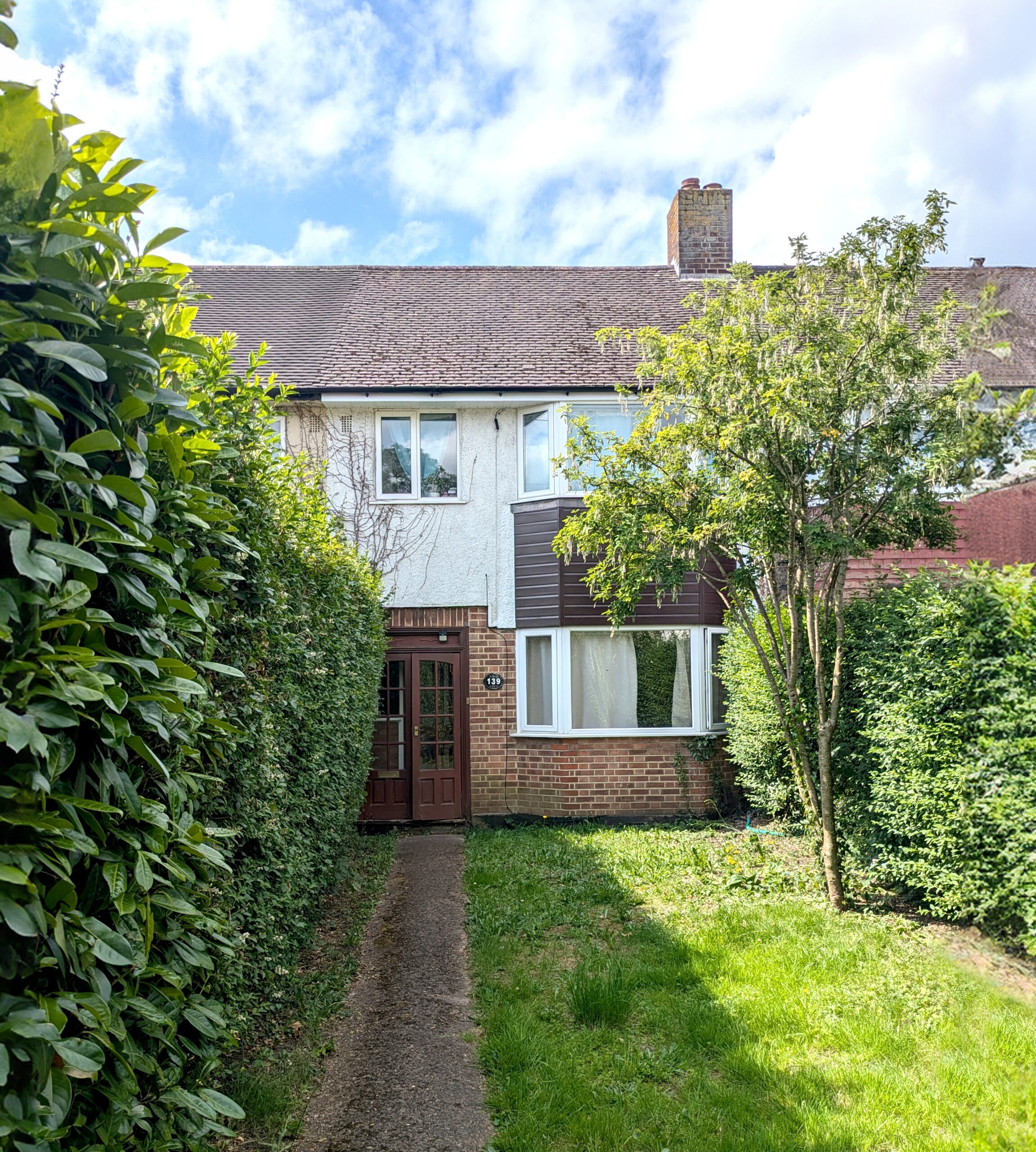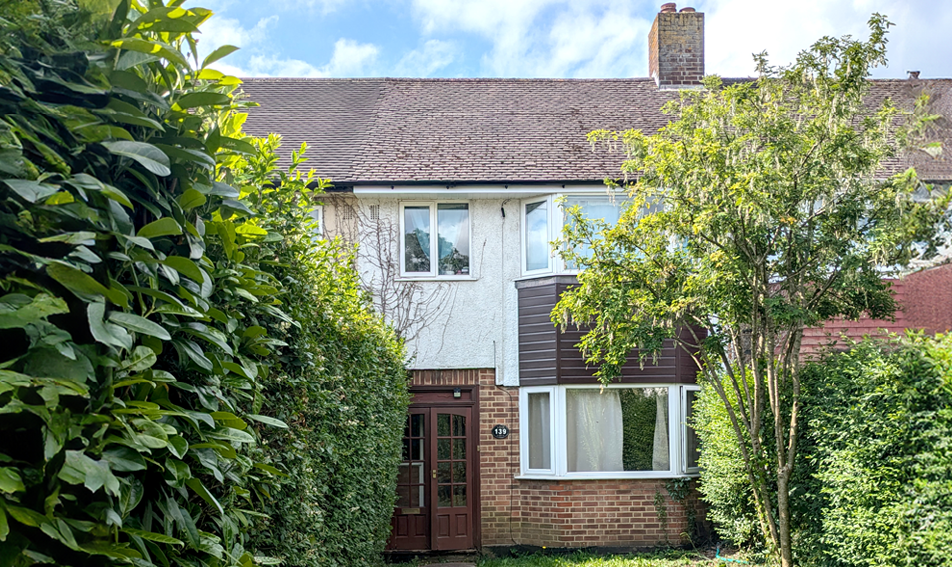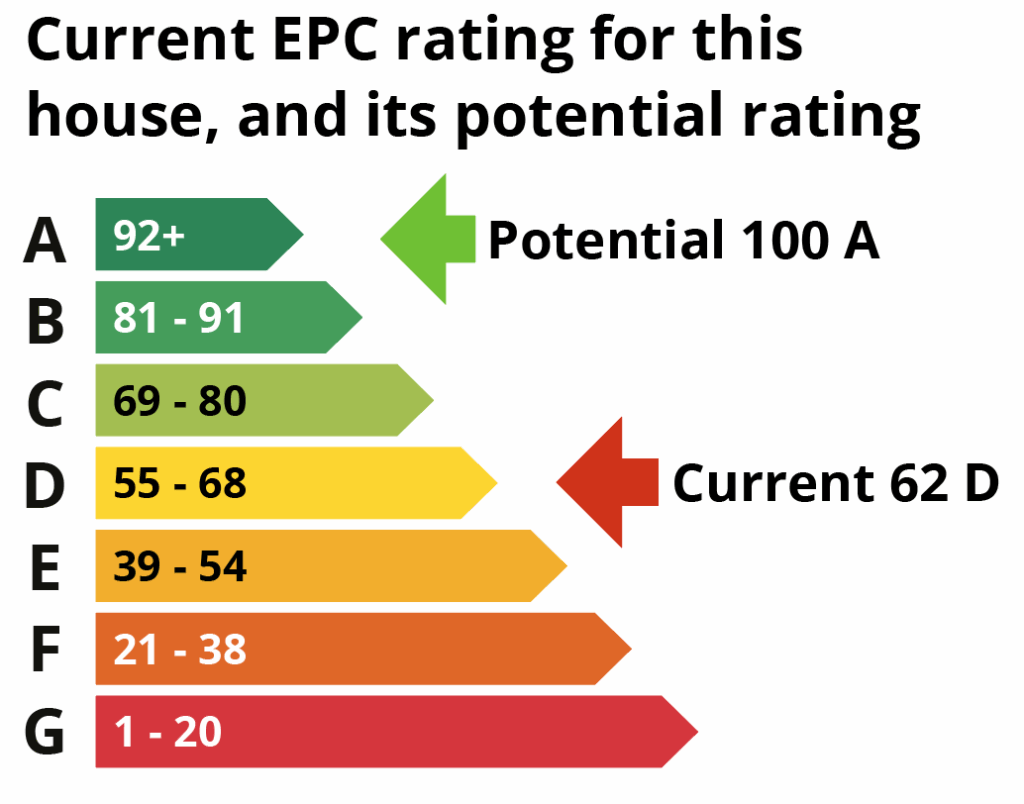
1900s mid-terrace rental
Could your rental property be made warmer, cheaper to run, and better for the planet? See what’s possible when you take a whole-home approach to planning energy upgrades.
What’s the potential of a rental property like this?
This 1900s mid-terrace in Littlemore, Oxford, is typical of older rented homes across the city. With solid brick walls, suspended timber floors, bay windows, and a mix of single and double glazing, it was cold, draughty, and expensive to heat.

The landlord wanted to prepare for future regulations, reduce running costs, and make the property more attractive to tenants. With a Whole House Plan, they could see how measures such as loft insulation, floor insulation, new glazing, and renewables would transform performance. Find out more about smarter property upgrades for landlords ›
Here’s what the plan revealed:
| Carbon emissions could be cut by over 90% |
| The EPC rating could rise from 62 D to 100 A |
| Annual fuel bills could drop from around £1,244 to almost nothing |
You don’t have to carry out every measure at once. The Whole House Plan gives you a roadmap so you can make improvements in your own time, at your own pace, and within your budget.

“As a responsible landlord, I obviously want to be compliant with the new legislation coming in. I’d encourage all landlords to get a survey as it gives you a huge amount of information about your property and really gives you the opportunity to put a plan in place for the legislation and beyond.”
Christian, Landlord, Littlemore, Oxford
Where this home stands now
House profile
| EPC rating | Current 62 D > Potential 100 A |
| Type | Mid-terrace |
| Built | 1900s |
| Location | Littlemore, Oxford |
| Occupancy | Tenanted |
| Bedrooms | 3 |
| Floor area | 64m² |
| Walls | Solid brick |
| Floors | Suspended timber |
| Roof | Pitched with loft |
| Windows | Mostly uPVC double glazed, some single glazed (including bay windows) |
| Annual energy use | 13,736 kWh (216 kWh/m²) |
| Carbon emissions | 2.8 tonnes CO2/year |
The EPC rating: now vs potential

An EPC rates your home’s energy efficiency – from A (best) to G (worst). A higher score can mean lower bills, but it doesn’t guarantee comfort. Whole-home upgrades help bridge that gap.
Long-term comfort, short-term disruption
| Key to tables: | Low impact: • | High impact: •••••• |
| Minor measures | Comfort & health | Disruption |
|---|---|---|
| Low energy lighting | ● | ● |
| Insulate and draught-proof loft hatch | ●●●● | ● |
| Replace single glazed window with double glazing | ●●●●●● | ● |
| Increase loft insulation to 300mm | ●●●● | ●● |
| Suspended timber floor insulation (using robot) | ●●●● | ●● |
| Insulate timber frame bay window wall | ●●●●● | ●●● |
| Ventilation improvements | ●●●●● | ●● |
| Major measures | Comfort & health | Disruption |
|---|---|---|
| External wall insulation | ●●●●● | ●●● |
| New insulated doors – front and rear | ●●●●● | ●●● |
| New double or triple glazed uPVC windows | ●●●●●● | ●●●● |
| Air Source Heat Pump | ●●●●●● | ●●●● |
| Measure | Comfort & health | Disruption |
|---|---|---|
| Solar PV | ● | ●● |
Expert tip

“Installing LED lights can help reduce energy bills. They have a long lifespan so are much lower maintenance for landlords. Thermal covers can be placed over the back of them in lofts to create an airtight seal and enable loft insulation to be continuous with no gaps in it.”
Geordie Stewart, Scheme Manager
The difference each step could make
These figures show how each recommended measure could affect the home’s EPC rating, energy bills, and carbon emissions – if installed in the order shown. They’re based on a full Whole House Plan tailored to this property.
| Measure | Est. cost | EPC | Fuel bill | CO₂/year |
|---|---|---|---|---|
| Where you are now | – | 62 D | £1,244 | 2.84 t |
| Loft insulation to 300mm | £2k–£2.5k | 67 D | £1,067 | 2.42 t |
| Suspended timber floor insulation (robot) | £3k–£4k | 69 C | £1,015 | 2.27 t |
| Ventilation upgrades | £1.5k–£2.5k | 69 C | £1,015 | 2.27 t |
| External wall insulation | £10k–£12.5k | 74 C | £824 | 1.73 t |
| Insulate bay window wall | £2k–£4k | 74 C | £816 | 1.71 t |
| New double-glazed windows | £9.5k–£12.5k | 76 C | £763 | 1.56 t |
| New insulated doors (front and rear) | £4k–£6k | 76 C | £739 | 1.49 t |
| Air source heat pump | £13.5k–£17.5k | 85 B | £560 | 0.27 t |
| Solar PV (3.3 kWp) | £4.5k–£6.5k | 100 A | £0 | 0.00 t |
Boost your EPC rating
Installing a single major system like a heat pump or solar panels can still make a big difference. These examples show how individual upgrades could shift the home’s EPC and reduce carbon emissions – even before doing everything else.
| Upgrade option | EPC rating | Fuel bill | CO₂ emissions |
|---|---|---|---|
| Just solar PV | 88 B | £458 | 1.89 t |
| Just heat pump | 75 C | £966 | 0.46 t |
| Solar + heat pump | 94 A | £374 | 0.07 t |
Expert tip

“This property has suspended timber floors which are cold, draughty and lose heat. A low disruption option for landlords is for foam insulation to be sprayed on the floorboards from below using a small robot.”
Natasha Ginks, Retrofit Coordinator
Wondering what’s right for your property?
A Whole House Plan gives you expert, independent advice on the best steps to take – and in what order – so every upgrade works for you and your tenants.
Don’t put it off another year. Take the first step with a free consultation. Our team of experienced Retrofit Advisers will listen to your goals, help you understand what’s possible, and outline the best next steps – no pressure, no obligation.
Smarter home upgrades. Backed by trusted retrofit expertise.

A partnership project
A House Like Mine is an Oxford City Council initiative, delivered as part of the Zero Carbon Oxford Partnership (ZCOP) in collaboration with Cosy Homes Oxfordshire. The idea was first developed through case studies in Charlbury, and has since been expanded to show what’s possible for homes across Oxford and Oxfordshire.
It’s designed to help you take the first step towards making your home cosy, energy-efficient, and ready for the future. Step by step.
A House Like Mine was funded by the MCS Foundation, Oxfordshire County Council, Oxford City Council, and Lucy Group. The case studies are licensed under a Creative Commons BY-NC-ND 4.0 licence (creativecommons.org).

Prefer a PDF version?
Download a shareable PDF of this case study – perfect for your community group, local class, or anyone curious about improving home energy efficiency.
We’re making this resource freely available to raise awareness of how retrofitting – upgrading your home to use less energy and stay comfortable year-round – can make a real difference.
Click here to download the PDF
